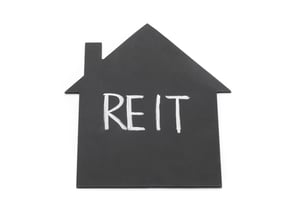Real estate, like nearly every aspect of our lives, took plenty of blows during the pandemic.
People fled big cities and, freed up by working remotely, clamored for homes in the suburbs. Locked-down families craved more space, landlords fretted over collecting rent from tenants struggling with unemployment, and commercial storefronts and office space sat empty.
Now as we look ahead, real estate is considered a bellwether for the future of an economic recovery, population migrations, consumer demand, and more.
Roofstock selected 10 emerging real estate trends in 2021, using data from the Emerging Trends in Real Estate 2021 report compiled by PwC and the Urban Land Institute. The trends cover topics such as investment prospects, notable real estate markets, population migration, and the effects of COVID-19 on residential and commercial real estate. The trends in this report are based on interviews and surveys of more than 1,600 people who work in real estate advisory, investing, lending, or real estate development.
Trends in real estate are intertwined. Construction costs are high as commodities are expensive and supply chains are disrupted. Consumers' shopping habits have altered demand for brick-and-mortar shops, warehouse space, and online goods distribution centers. Rents are soaring, and houses in some places are sold within days, well over the asking prices. Keep reading to see how these elements are influencing emerging trends in real estate this year.
sculpies // Shutterstock
Most important issues for the real estate market: job growth, pandemic, construction labor costs
As jobs come back across the U.S., people who were renting may find themselves able to take out home loans, adding more buyers to an already competitive market. Some experts have predicted the housing shortage will continue for years before self-correcting.
While building slowed during the pandemic, construction costs—both labor and materials—soared. Many of the price rises were a result of worker shortages and disruptions in supply chains for commodities and raw materials. The price of lumber, as one example, rose by more than a third. Costs continue to be high, compounded by a shortage of skilled labor.
RELATED
With remote jobs offering people the ability to work from anywhere, check out this list of the cheapest states to buy a house.
Gorodenkoff // Shutterstock
COVID-19 accelerated the development of public open spaces, decline of storefront retail
A 2020 survey from Ernst & Young Global Limited found 33% of consumers anticipated shifting more to online shopping; in 2021, nearly 40% said they are still shopping at physical stores less than before the pandemic started. Consumers are showing less tolerance for service disruptions linked to the coronavirus. Just one in five of those surveyed said they are forgiving retailers for such disruption.
COVID-19 has also elevated the discussion around how critical public open spaces are and the disproportionate access different demographics have to them. Roughly 100 million Americans do not live within 10 minutes of a park—a statistic that came into sharp focus in 2020. Restaurants setting up outside seating, along with surges in discussions around and demand for more open spaces, are driving infrastructure projects that will answer that need from coast to coast.
scarp577 // Shutterstock
Suburban migration is growing and will likely increase
City residents started heading for the suburbs to work remotely when the pandemic hit, and they are continuing to do so. Many in this demographic are largely moving to suburbs close to cities—such as New Yorkers moving to New Jersey or Connecticut—leaving the option to return to the office part time. A suburb close to the city also offers access to urban amenities. Experts say demand will continue to grow for single-family suburban houses.
G-Stock Studio // Shutterstock
Government-sponsored enterprises bring the capital for real estate institutions
Government stimulus for coronavirus-related economic recovery is helping boost the real estate sector and real estate investment trusts. Funding helps tenants stay current with rent, allowing landlords to pay their mortgages, property taxes, and other expenses. Other government funding has gone directly to landlords and to small businesses, also benefiting real estate investments.
fizkes // Shutterstock
Effects of COVID-19 are exacerbating the affordable housing crisis
With housing prices rising, affordability has become a worsening crisis. Across the country, rents have gone up more than 7% in 2021, and they are expected to continue to rise. By definition, affordable housing means the property costs 30% or less of a household’s income. It’s estimated that nationwide, there is a shortage of some 6.8 million rental units for tenants with extremely low incomes.
Konstantin L // Shutterstock
Raleigh/Durham and Austin are two real estate markets to watch
In Raleigh, one of the hottest real estate markets in the nation, houses listed for sale are on the market an average for a mere four days as of July 2021. Demand for housing is fueled in the area in part because a high number of buyers have good credit scores and are prepared with healthy down payments. In Austin, median home prices have been hitting record highs month after month. Housing prices are up some 42% from where they were a year ago, according to local realtors there.
DID YOU KNOW...
Buying rental property has become a more popular way to build a supplemental income stream. Learn how to buy a rental property in this guide.
Andy Dean Photography // Shutterstock
Investment prospects are highest for industrial/distribution and single-family housing
Industrial and distribution properties are strong commercial real estate investments since e-commerce grew so dramatically amid the pandemic. With more e-commerce and less business at traditional brick-and-mortar stores, warehouse space is needed for goods. According to one estimate, 330 million square feet of warehouse space will be needed to house online orders by 2025. Additionally, companies doing sales online need distribution centers as they seek to improve their delivery systems.
Andrey_Popov // Shutterstock
Fulfillment, warehouses, and single-family rental subsectors have highest ROI potential
Along with fulfillment and warehouse properties being in demand, the single-family rental subsector is attracting investor interest. Having spent so much time at home during the pandemic, families are moving and seeking detached rentals with more space. Of the nation’s 46 million rental units, about a third are single-family. The build-to-rent market is growing as well, and about 12% of new construction of single-family homes this year has been in the area of rentals.
StacieStauffSmith Photos // Shutterstock
Residential investment prospects grew the most for vacation homes, high-income single-family homes
Vacation homes have become a popular investment as Americans are traveling again but are opting for more privacy and distancing than traditional hotels and motels provide. This summer, over the Independence Day holiday weekend, reservations for short-term vacation rentals were nearly 50% higher than they were in the pre-pandemic summer of 2019. For the rest of the 2021 summer, the outlook for such reservations is strong, up 80% over 2019 levels. Rates are higher overall: another plus for the vacation-home investor.
Stock Creative // Shutterstock
Single- and multifamily housing starts are expected to plateau until 2022
Housing starts are being held down in large part by the high cost of building materials and a labor shortage. The prices for steel, lumber, concrete, and other materials are high. Also, builders are seeing extensive delays in the delivery of goods like heating units and windows. Lumber prices could stay high due to wildfires this summer in the West, experts say.









